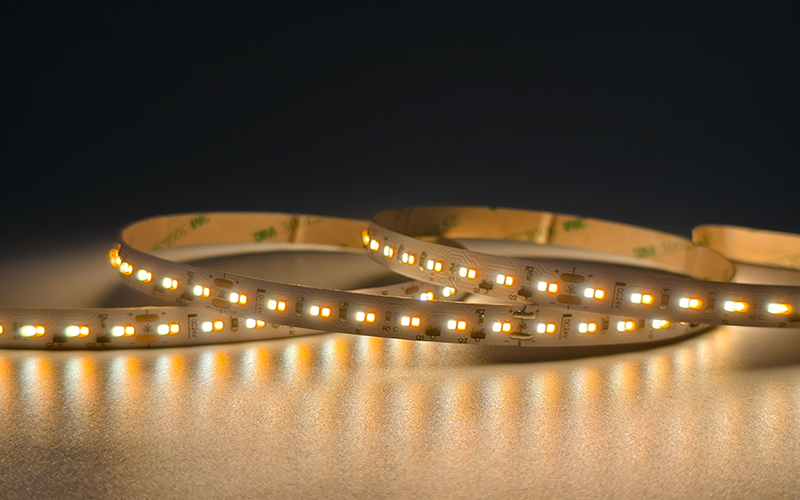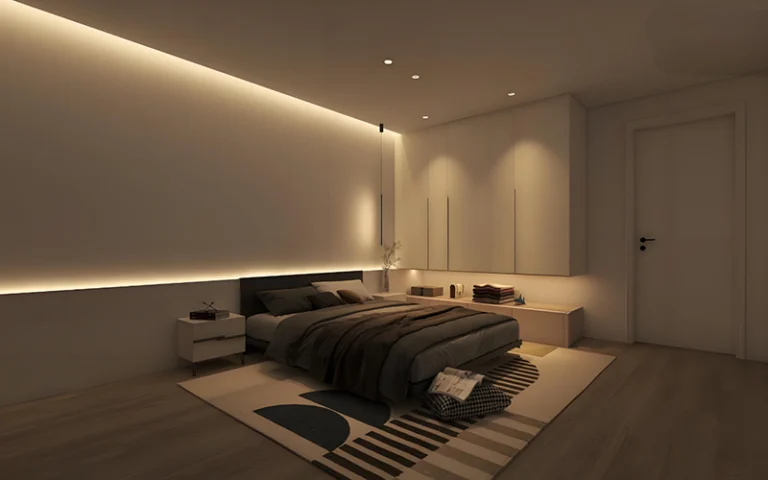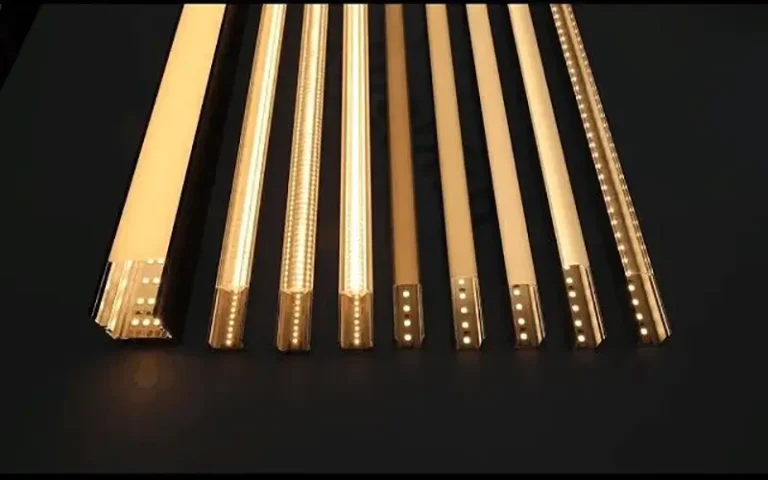How to Dim LED Strip Lights?
LED strip lights are available in many color temperatures and brightness levels. You can choose the right color and brightness according to your needs, in addition to the basic lighting functions. The dim LED strip lights also provide greater flexibility. Allowing users to control brightness, set the perfect atmosphere and save energy.
Whether it is adjusting the atmosphere of the living room or providing custom lighting levels in a commercial environment, dimmable LED light strips can achieve perfect lighting for any environment. What does a dimming LED strip lights do? How do you dim the strip lights?
Why We Dim LED Strip Lights is Useful?
Dimmable LED strips offer a variety of benefits that are both practical and aesthetic. The main one being that you can dim the light to suit your own needs and mood. If you need choose the power supply, pls read
How to Choose LED Power Supply for LED Light Strips?
- Energy Efficiency: Dimming reduces energy consumption. For example, when you are taking a break, you may not need such bright lights. Then you can lower the brightness at will. Because less power is required to operate the lights at lower brightness levels.
- Ambiance Control: Dimmable LED light strips allow users to adjust the lighting intensity to create the desired atmosphere. You can go from bright and focused to soft and relaxing, depending on the event you are hosting.
- Extended Lifespan: When we run dimmable LED strips, running the LEDs at lower brightness reduces heat output. This helps extend the life of the LED strip.
- Reduced Glare: Dimming helps reduce glare. This is particularly useful for lighting work areas, bedrooms and leisure areas.
How Do I Dim an LED Strip Lights?
There are a variety of ways to dim an LED light strip, and they don’t have to be complicated. Each method has unique features and compatibility requirements. Here are some common dimming methods:
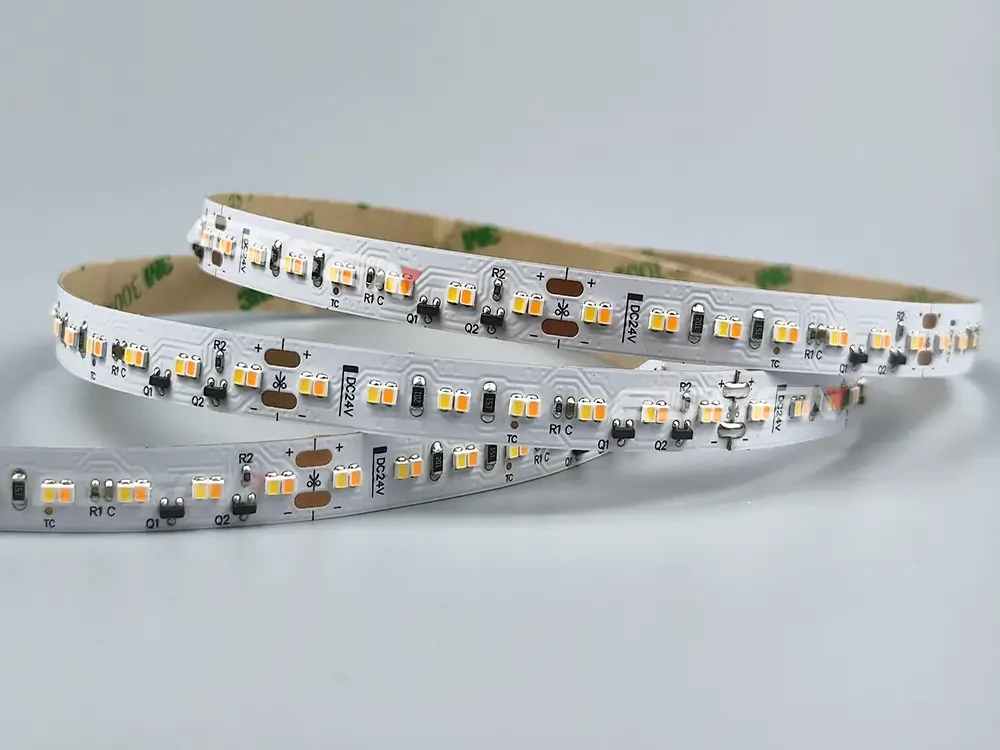
- Remote Control Dimmers: This is a more common method, but it is also only suitable for home and small venues. A handheld remote that controls the brightness level of the LED, usually paired with a receiver for use with specific LED light strips.
- Wall Dimmer Switches: These switches mount directly to the wall and allow users to manually adjust brightness without the need for additional equipment. Convenient and easy to operate, no need to look for a remote control.
- Smart Dimmers: This is a more modern control. Smart dimmers integrate with home automation systems, offering remote control, app control, and voice command options.
Each method of dimming LED light strips offers different levels of control and flexibility, and it’s important to choose the method that meets the specific needs of your lighting setup.
Triac Dimming
Most wall dimmers on the market today utilize TRIAC (Triode for Alternating Current) dimming signals. To control LED strip brightness through these wall dimmers, you’ll need a TRIAC-compatible dimmable power supply.
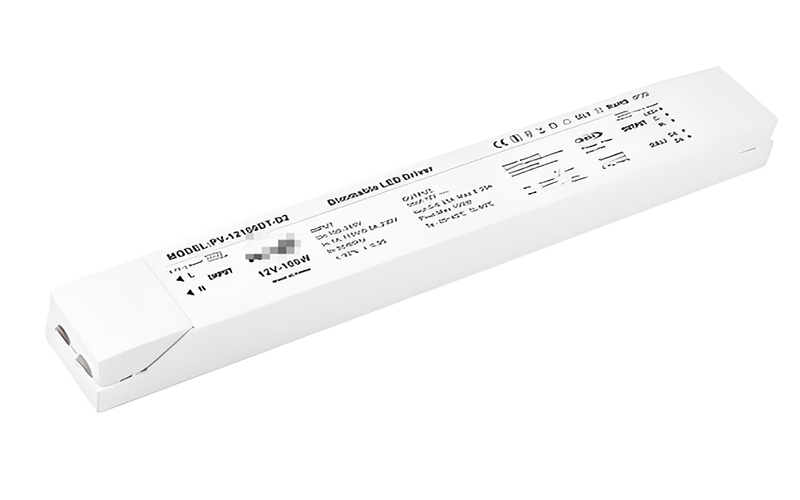
The TRIAC dimmable power supply serves two key functions:
- It converts the standard 120V or 220V AC power into 12V or 24V DC, which is suitable for powering LED strip lights.
- It interprets the dimming signals from the TRIAC wall dimmer and adjusts the LED strip’s brightness accordingly.
For proper setup, connect the TRIAC wall dimmer to the TRIAC-compatible power supply, and then link the power supply’s output to the LED strip. This setup allows the dimmer to control the brightness levels effectively.
To minimize voltage drop, place the power supply as close to the LED strip lights as possible. This helps maintain consistent brightness across the length of the strip by reducing power loss, especially important in longer installations.
Low-Voltage PWM Dimming
Pulse Width Modulation (PWM) is a popular dimming technique for LED strip lighting, offering precise brightness control through digital signals. PWM sends a series of rapid on-and-off pulses to the power supply, adjusting the amount of power sent to the LED strip and thereby controlling its brightness. This method is different from reducing voltage; instead, it adjusts the width or “duration” of each pulse, which effectively changes the perceived brightness without altering the power supply voltage.
To set up PWM dimming, a DC PWM dimmer is typically placed between a non-dimmable power supply and the LED strip. This dimmer has a simple turn dial, or potentiometer, that lets you manually control the brightness of the LED strip. The power supply for this setup can be any standard DC unit, as it doesn’t need to support dimming itself.
One of the main advantages of PWM dimming over TRIAC dimmable power supplies is cost-effectiveness. PWM dimmers are generally more affordable and readily available, and they’re ideal for small to medium-scale projects where you don’t need to install dimmers in-wall. With a straightforward circuit design, DC PWM dimmers are easy to set up and connect directly to both the power supply and LED strip, making them an excellent option for portable or temporary lighting installations.
Different types of PWM dimmers are available, each with unique benefits:
Inline Knob Dimming
Inline knob dimmers are simple, wired solutions for dim LED strip lights brightness. This setup uses direct wiring from the power supply to the LED strip lights, allowing you to control brightness with a built-in dial.
Because inline dimmers are independent units that don’t require remote control, they are generally best for smaller-scale projects where you can easily access the dimmer in person.
RF Dimming
RF (Radio Frequency) dimming allows for wireless control of LED strip brightness using a handheld remote. This dimming method enables you to adjust brightness from a distance, typically up to 20 meters, without needing a direct line of sight to the dimmer. RF dimmers are particularly useful for projects where easy remote access is essential, such as in spaces with hard-to-reach or concealed LED strip installations.
WiFi Dimming
WiFi dimmers enable smart control of LED lighting through a WiFi connection, making them ideal for smart home or office lighting systems. With WiFi dimming, you can manage brightness levels from a mobile app, providing full remote access and integration with smart home assistants like Alexa or Google Assistant. This option is convenient for modern spaces where advanced control and integration with other devices are priorities, as it allows users to adjust lighting with voice commands or automated routines.
0-10V Dimming
0-10V dimming is a standard in commercial lighting and is commonly used for LED strip lights in professional and industrial settings. This method adjusts brightness by sending a control signal between 0 and 10 volts to the LED driver, with 0V representing off and 10V representing full brightness.
Ideal for large-scale installations, 0-10V dimming provides precision control over lighting intensity, making it well-suited for workspaces and other environments that require precise light management.
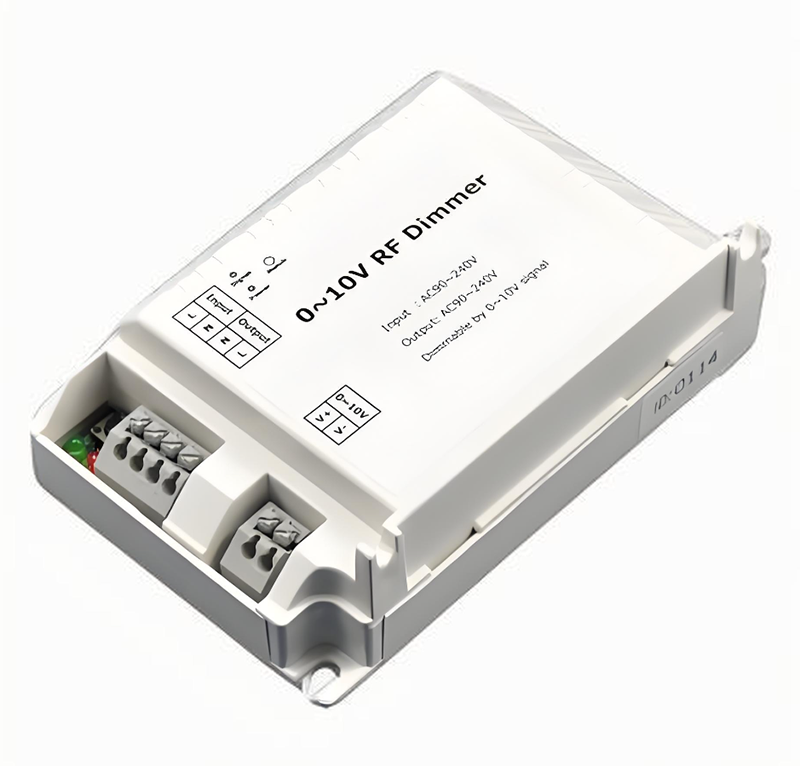
DALI Dimming
DALI (Digital Addressable Lighting Interface) dimming is an advanced digital dimming technology designed for large-scale smart building lighting systems. Unlike more basic dimming systems, DALI allows each light or lighting zone to be individually addressed and controlled, providing a highly flexible and customizable lighting experience. This feature makes it particularly suitable for complex lighting layouts where different areas require different lighting levels or schedules.
DALI dimming goes beyond traditional 0-10V systems to provide precise two-way communication between the lighting controller and each fixture. While 0-10V dimming systems control the brightness of connected lights by adjusting the voltage, DALI operates using digital signals, allowing for more nuanced control. The system can send unique commands to each fixture, including turning lights on or off, dimming to specific brightness levels, and even setting specific lighting scenes for different times of day or activities.
In a DALI setup, a central controller communicates with individual LED strips or fixtures over a network, making it ideal for environments where lighting needs vary over a wide area.
As a result, DALI dimming is ideal for dynamic, scalable lighting systems in commercial environments, providing advanced features and controls that increase flexibility and energy efficiency.
DMX Dimming
DMX (Digital Multiplex) dimming is another advanced method used primarily in theatrical, entertainment, and architectural lighting. They provides control over multiple channels and is widely used for RGB and RGBW LED strips that require color-changing capabilities.
DMX dimming is well-suited for users who want creative lighting control and effects, particularly in environments where ambiance and color control are key.
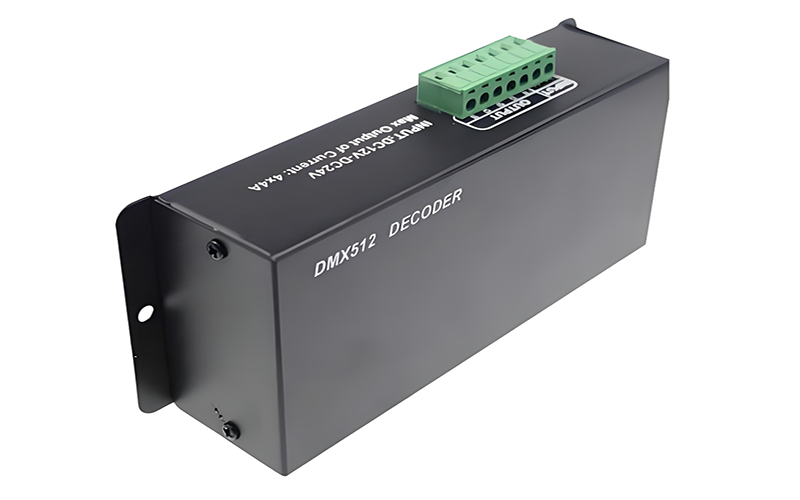
Conclusion
When you dim LED strip lights can change the brightness and atmosphere of any space, and there are many dimming methods to choose from. From basic options such as PWM to advanced systems such as DALI and DMX, there is a solution for every need and environment. In addition, dimming to warm LED strips can also adjust the color to meet different needs.
We provide 5 years high-quality LED strip, customizable LED strip lighting solutions, please browse our high-quality products at ESSENLED.
FAQs
Of course, most LED strips are dimmable. You just need to use a compatible dimmer switch or controller designed for LED strips. Many modern LED strips are dimmable. And with the right power supply and dimmer controller you can adjust the brightness to your preferred level.
No, regular dimmer switches will not work with LED strips. LED strips need to be connected to a dedicated power supply and dimmer. Using regular switches may result in flickering, uneven dimming, or even damage to the LED strip.
Yes, RGB LED strips can be dimmed. You need an RGB controller with dimming capabilities. Most RGB controllers come with a remote control or app. That allows you to adjust the brightness of each color (red, green, blue) individually or as a whole.

